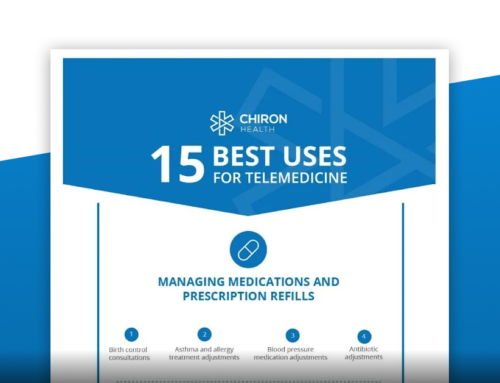Direct Health Africa’s CEO, Neil Kinsley shares some home truths and lessons learnt about telehealth over the lockdown to date.
Since the beginning of lockdown, our healthcare system has been faced with the very real challenge of sustaining the capacity to provide care for COVID-19 patients, as well as continuing to care for those suffering from other ailments that require ongoing management. Coupled with this, was, and still is, the need to protect our doctors nurses, and other allied health providers so that the healthcare system can continue to function during the pandemic.
Telehealth has been around for a while, but its accelerated uptake in recent months has provided the ideal solution to dispensing care whilst ensuring social distancing. Our lockdown in South Africa may well have eased a little, but the need for social distancing is just as important as it was under level 5. In fact, if we fail to practice good social distancing, we may well see ourselves back under stricter measures.
It is also short-sighted to consider the use of telehealth as being limited to handling the current crisis. On demand healthcare is here to stay. To move forward, it’s good to look back so we can draw the right conclusions from the experience of the telehealth community and more broadly by providers, policymakers, health care insurers and payers, researchers, and society at large.
Some lessons learnt to date:
- A large portion of outpatient visits can be clinically managed from a distance. More specifically, patients with non-urgent conditions can be triaged via telehealth applications without compromising their health or quality of care.
- The infrastructure was a lot better than what we first thought, and patients received care via their smart phones, all over the country. Existing electronic health records, used by providers, provided pre-existing history, past diagnosis and current medications, providing continuum of care to their patient base. Some integrated with existing systems, to provide a seamless experience.
- Telehealth platforms were extremely efficient in providing training and knowledge around how best to implement remote healthcare into a practice.
- Because telehealth is a way to protect both patient and doctor, there has been little resistance to this new way of care delivery
- Regulators relaxed all restrictive regulations for telehealth, making it a lot easier to utilise.
- Not all healthcare providers embraced telehealth believing the industry will revert to ‘normal’. This had the effect of severely curtailing not only their continuum of care but stultified their practices – it has been shown that those providers that engaged in telehealth measures, had lesser detrimental effects on their businesses.
- Not all telehealth platforms are equal – or compliant. Education of the audience has been critical in ensuring the success of telehealth. It continues to be important as technology evolves and will play an increasing role in how healthcare is accessed and delivered.
Whilst the debate around lockdowns continues and whether decisions about any suspensions/revisions will be based on experiential or investigatory evidence or political considerations, we do know is that there are hundreds of examples of providers, who adopted telehealth into their practices and had almost no interruption to revenue flows at all.
We also know that patients like using telehealth applications. It’s convenient, often cheaper, saves time and there are many research pieces coming out, showing that patients place a high value on remote care.
The telehealth community long predicted the rise of app-driven healthcare and the pandemic has brought that prediction forward by three to five years, however, this is not the time to relax and claim vindication for that vision.
The crisis presented an unprecedented opportunity for us to grab telehealth with both hands and make it work for us. This should not be a wasted opportunity without making progress. Heighten engagement is required to ensure that policy and regulation is not rescinded, that the appropriate research is done, to clarify what telehealth is most appropriate for, and how best to use it going forward.
In this way, future generations will benefit from what we learn today…
A note about social media:
Social media platforms are not appropriate for delivering healthcare:
There is a plethora of robust and easy to use solutions out there today and that are compliant with the various healthcare industry bodies. Social media platforms are still being used for the transfer of clinical data and it is worth considering these points:
- Video Conferencing (VC), software is built for general communication and collaboration, while a telehealth platform has been specifically designed to deal with the transfer of clinical data. It is a professional tool designed to be used by business professionals.
- A VC platform exposes names and email addresses of people on a call. A telehealth platform protects the privacy of the healthcare provider and the confidential records of the patient.
- A VC platform was never designed for collaboration between medical professionals, while a telehealth platform has this specific tool embedded.
- Nothing is built into a VC platform, making for a far more manual experience for the provider.
- VC platforms are not aligned with clinical workflows and does not actively contribute to improved change management. Record keeping is manual, unmanaged and unprotected. There is also no built-in informed consent. Telehealth platforms, particularly those integrated into practice management applications, like EZMed, were extremely efficient in providing training and knowledge around how best to implement telehealth into a practice and streamlining the claim process.
- VC platforms have no companies with any healthcare regulatory frameworks.






Leave A Comment